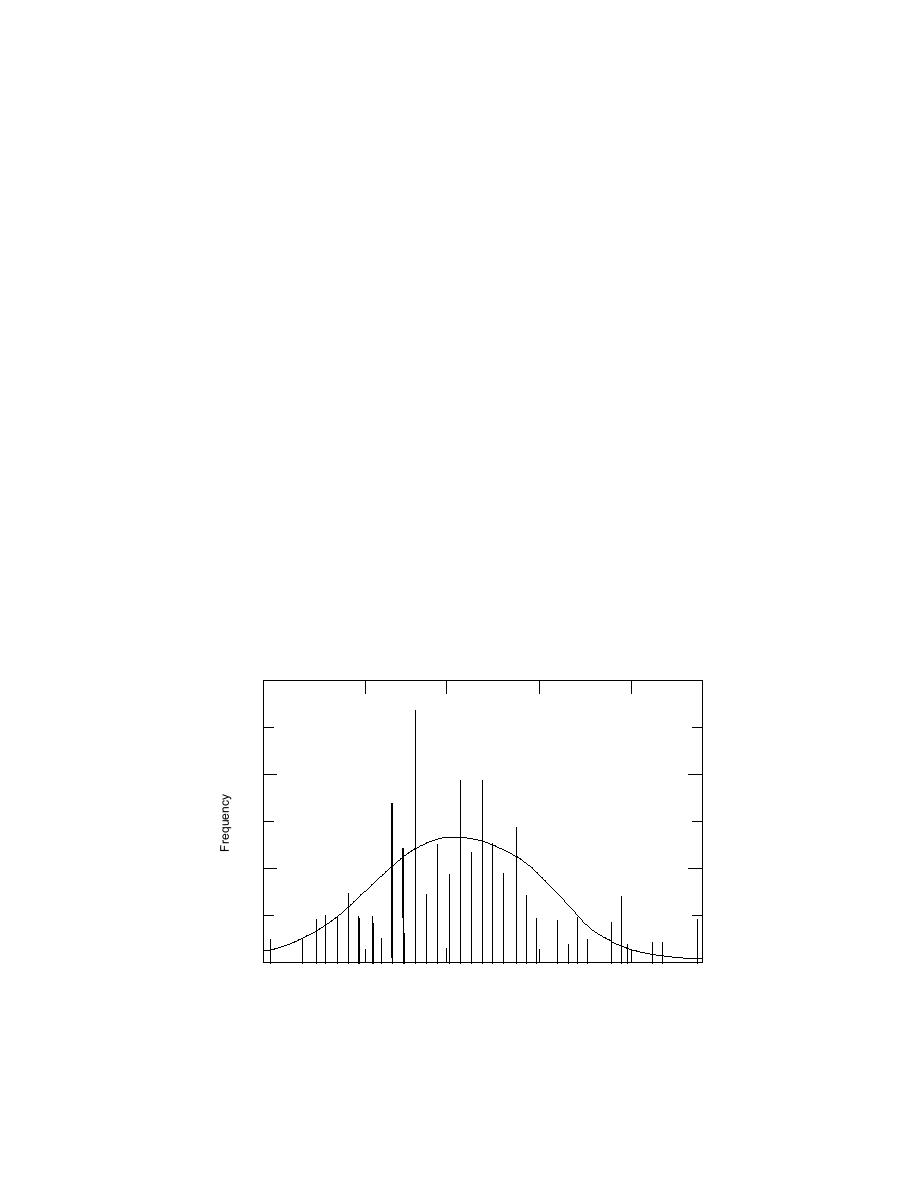
a borehole dilution method to determine perme-
2.5% for snow-covered ice up to 85% through 21-
ability of a frazil ice accumulation in the labora-
cm- (8.3-in.-) thick clear ice. Transmittance through
tory. She reports an intrinsic permeability of 6.1
clear ice on both clear and cloudy days was slightly
1.94 107 cm2 (coefficient of variation 32%) and
higher for clear days in the upper 2 m (6.6 ft) of
depth and was not significantly different below
that point. No actual values of incident or trans-
(coefficient of variation 32%). These values corre-
mitted PAR were reported. Vincent et al. (1998)
spond to a silty-to-clean sand deposit. Similar tests
reported transmittance of ~1% to ~10% in four
on frazil ice deposits in the Tanana River, Alaska,
Antarctic freshwater lakes, with PAR of about 80
(White and Lawson 1992) resulted in the calcula-
mols/m2 at 10-m (32.8-ft) depth in Lake Vanda
tion of an intrinsic permeability of 2.75 1.76
and about 8 mols/m2 at 5-m (16.4-ft) depth in
Lake Bonney. White and Melloh (1999) measured
cm/s, values analogous to a gravel deposit. The
PAR at mid-depth in a shallow ice-covered river
relatively high coefficient of variation (69%) was
in Vermont and found that the mean daily inte-
attributed to large variation in the structure of the
grated irradiance was 3.3 mols/m2/day during a
field deposits tested as indicated by borehole re-
late-winter ice-covered period. Their maximum
sistance logs.
observed PAR of 488 mols/m2 is comparable to
open-water wintertime values reported by Guasch
Ice piece size and distribution
et al. (1998) for rivers in Spain as well as to sum-
Little information regarding ice piece size and
mertime measurements for shaded rivers.
distribution in jams is available in the literature. A
search of the CRREL Ice Jam Data Base (IJDB) in
June 1999 identified some information on ice piece
Permeability
Dean (1976) and Beltaos and Dean (1981) used
size in less than 0.2% of the records. It is clear from
a constant head permeameter to determine the in-
the available descriptions that damaging ice jams
trinsic permeability of frazil deposits. Dean re-
can occur when parent ice thickness ranges from
ported a value of 1.53 105 cm2, and Beltaos and
very thin (about 6 in.) up to very thick (4 ft). Brief
Dean reported 1.56 105 9.19 107 cm2. These
estimates of floe size and distribution were given
are comparable to the intrinsic permeability of a
for two breakup jams and one freezeup jam. The
coarse sand or fine gravel deposit. However, the
only known quantitative size distribution is for
test method involved destructive sampling that
brash ice (Fig. 15). The data were developed from
may have affected their results. White (1991) used
a photograph taken on the St. Clair River in Feb-
12
8
4
0
0
5
10
20
50
Effective Diameter (cm)
Figure 15. Distribution of ice piece sizes observed on the south channel of the St. Clair
River, 25 February 1987. (From Daly and Arcone 1987.) Ice piece diameter is ex-
pressed here as equivalent area circles for measured ice pieces.
23



 Previous Page
Previous Page
